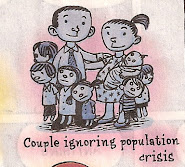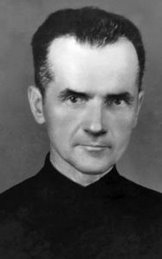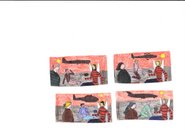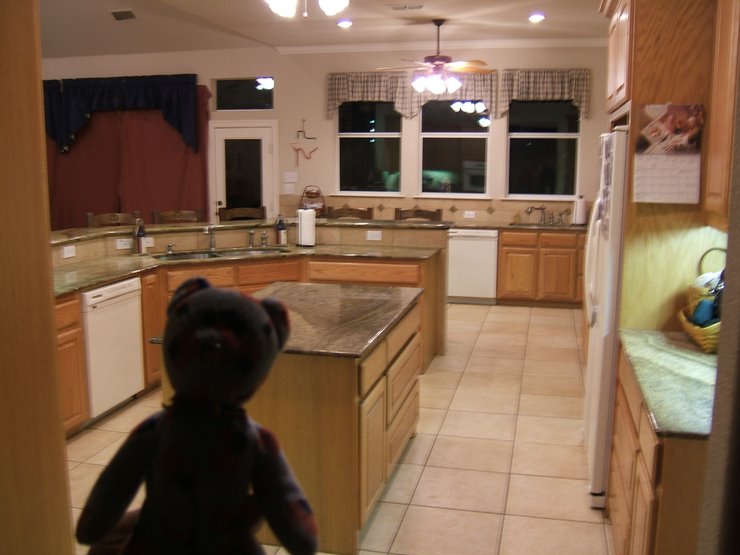The Goulet Pen Company is run by a young couple; I believe they are both recent graduates from Virginia Tech. Brian and Rachel Goulet are small business owners, and their product and passion are pens. Anyone can sell pens; these folks have made a name for themselves by not only selling fountain pens, inks, and writing material. They have also produced a large number of videos on the practical aspects of writing with fountain pens. I have found them to be informative videos which also showcase their many products. It is nice to be able to watch a video of the pen you want to buy before you put down money for it.
Here is one of the first videos produced by the Goulet Pen Company. Here Brian Goulet explains why he is starting this video channel:
This video is two years old; in the interim, their company has expanded, his family has grown, and he has lost a bit of weight. They are living the life of the small business owner; I wish them continued success.
On to Noodler's Ink. Noodler's Ink makes a huge line of inks which come in a variety of colors. In addition, the inks have different characteristics which you can research on the website. The first ink I ever selected from Noodler's was one which dried fast; I tend to write in haste, and smudging could result if the ink is wet for a while on the page. The ink I bought was called Bernanke Blue, after Ben Bernanke, the former Chairman of the Federal Reserve. As the label says, one needs a quick-drying ink when one is printing so much money.....
Oh look! It even has his picture on the side of it:
I like this ink. It dries quickly, and it is a beautiful blue. I can use it at work because all medical records are scanned into the electronic chart in a uniform black color. While I was at it, I bought one of the Noodler's fountain pens. This one is called the Ahab, and it is very reasonably priced. It came with this drawing, which shows Captain Ahab from Melville's book Moby Dick holding a harpoon. It is hard to see with the pen in the way, but this Captain Ahab has a fountain pen rather than a wooden leg for his missing leg.
By the way, years ago I wrote a review for a book which described the incident that apparently inspired Herman Melville's book, Moby Dick. The book is titled, In the Heart of the Sea: The Tragedy of the Whaleship Essex, by Nathaniel Philbrick. My review can be found here.
The Ahab is a large fountain pen. It is one of the largest in my collection, and has the potential to hold a lot of ink. There is a simple piston mechanism for drawing up ink shown in the picture below. Note that the nib is missing; at this moment it is on another pen. More on that subject later.
Here is another view of the nib. The color of this pen is blue, but it is translucent so one can see the amount of ink still in the pen. Some pens are made of clear material so the mechanism can be seen; these types of pens are generally known as 'demonstrator' pens.
Here one can see the variable thickness of lines. I am pressing more than usual at this point.
When I flipped the paper over I could see where the ink had bled through; this is more a characteristic of the paper than the ink. That knife included in the picture is a little tractor. I had to keep that from my youngest children who wanted to play with it.....
One of the first times I used the pen was writing something while lying in bed. I fell asleep, and woke to find this ink stain on the bed cover. Oops. Thankfully it washed out.
So what do I like and dislike about this pen? First off, I like how it writes. It makes a fine line for those who prefer that. It feels good in my hand, but I prefer pens that are a little thinner. Occasionally the ink won't run, but I can get it to flow by just pressing the nib on paper to make the tines of the nib separate a little bit. I can watch the ink start to flow, filling the gap between the tines, and then I am good to go.
My biggest reservation about this pen is actually one of the things I like about it. This is not a 'beginner's' fountain pen. This pen sometimes requires a bit of tweaking, and Nathan Tardiff, the owner of Noodler's Ink, even encourages people to fiddle around with this pen. As noted in one of the pictures above, I have taken the nib off this pen and placed it in another pen to see if it works (it does). Nathan even has videos on his website where he shows how to modify his pens even further.
On another occasion, I dropped my Ahab pen off my desk. It landed right on the nib, bending it. At first I thought how I would replace the nib, but then I decided to just bend it back into shape. That sufficed, and I have not had any problem with it since.
If you like to take apart pens and experiment with them, the Noodler's Ahab pen is for you.
Here is a writing sample from more than a year ago; note that a good pen does not automatically make for good penmanship:
Here are three reviews for the Ahab. First is the one from the Goulet Pen Company:
Next is one from this doctoral student from the Netherlands. He has a lot of good reviews:
And last, the review of the pen by its designer, Nathan Tardiff:







































